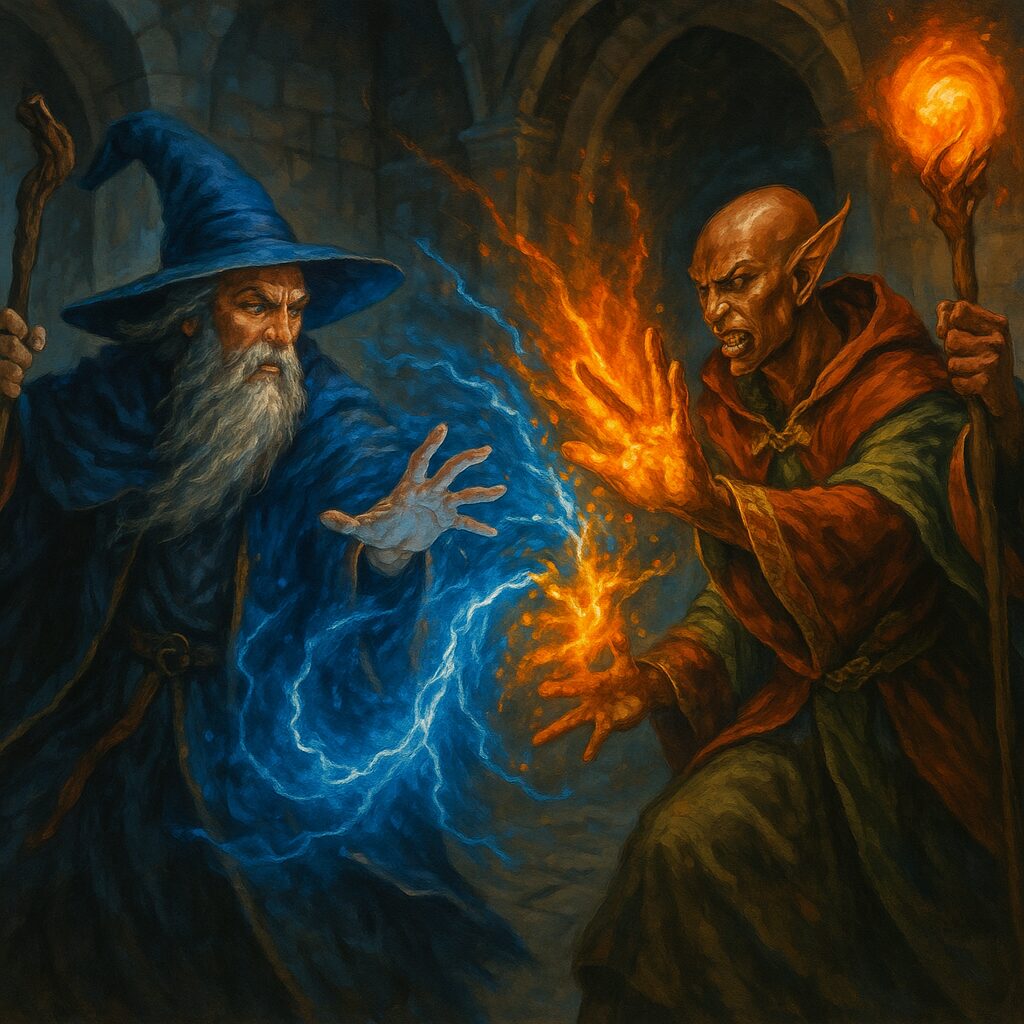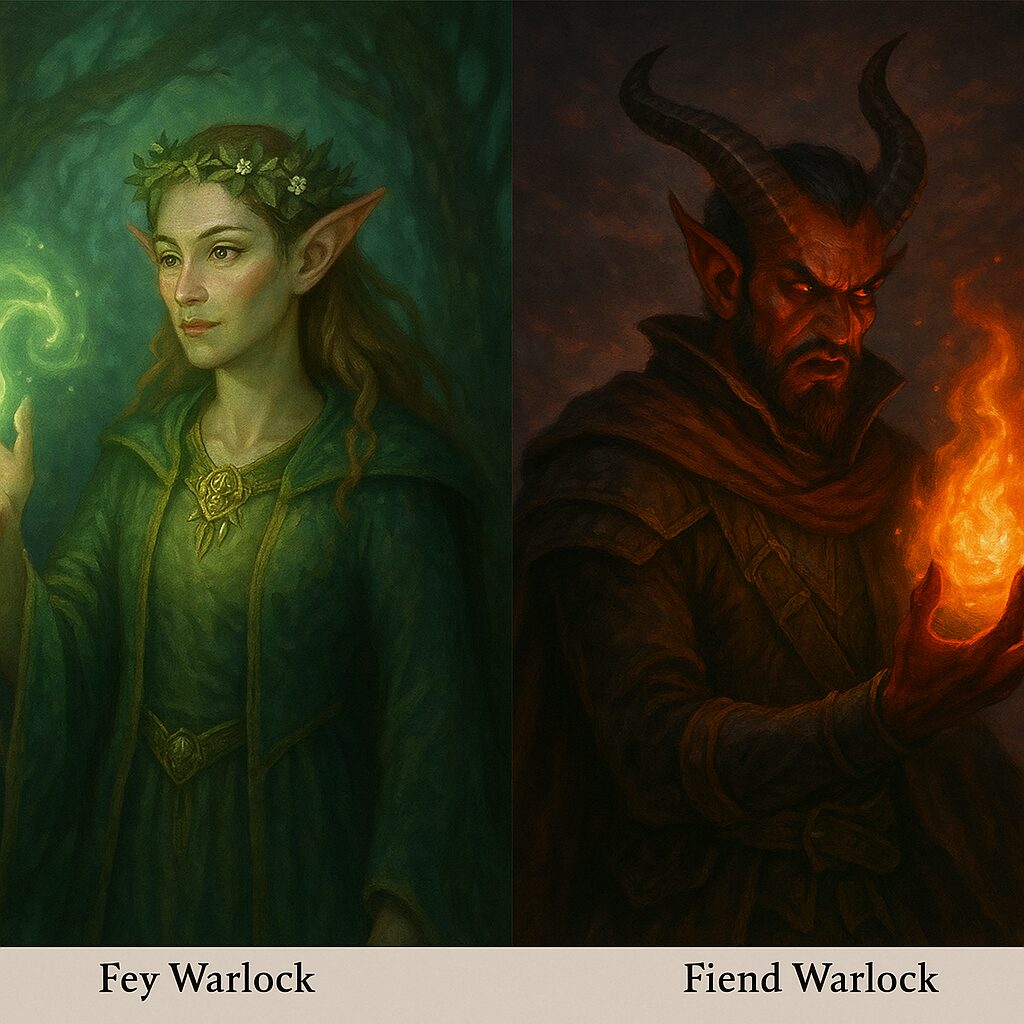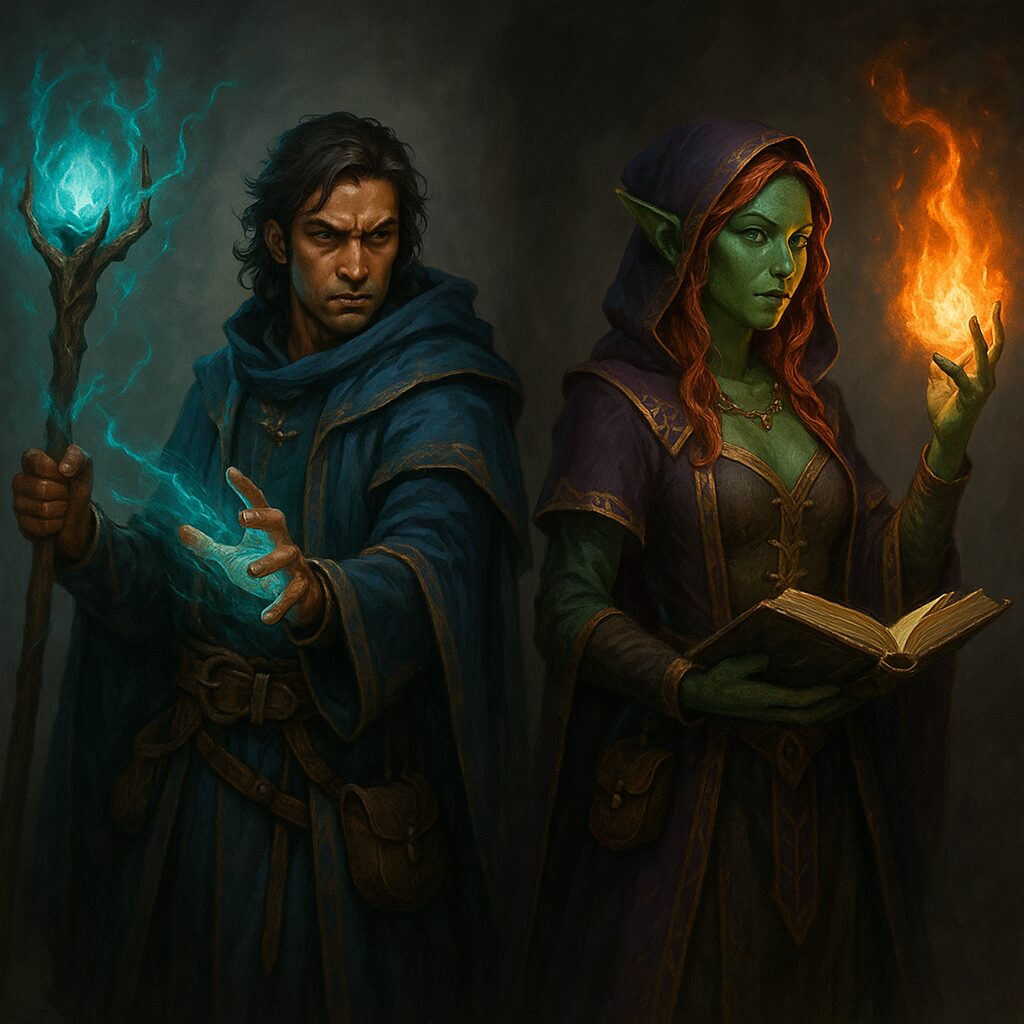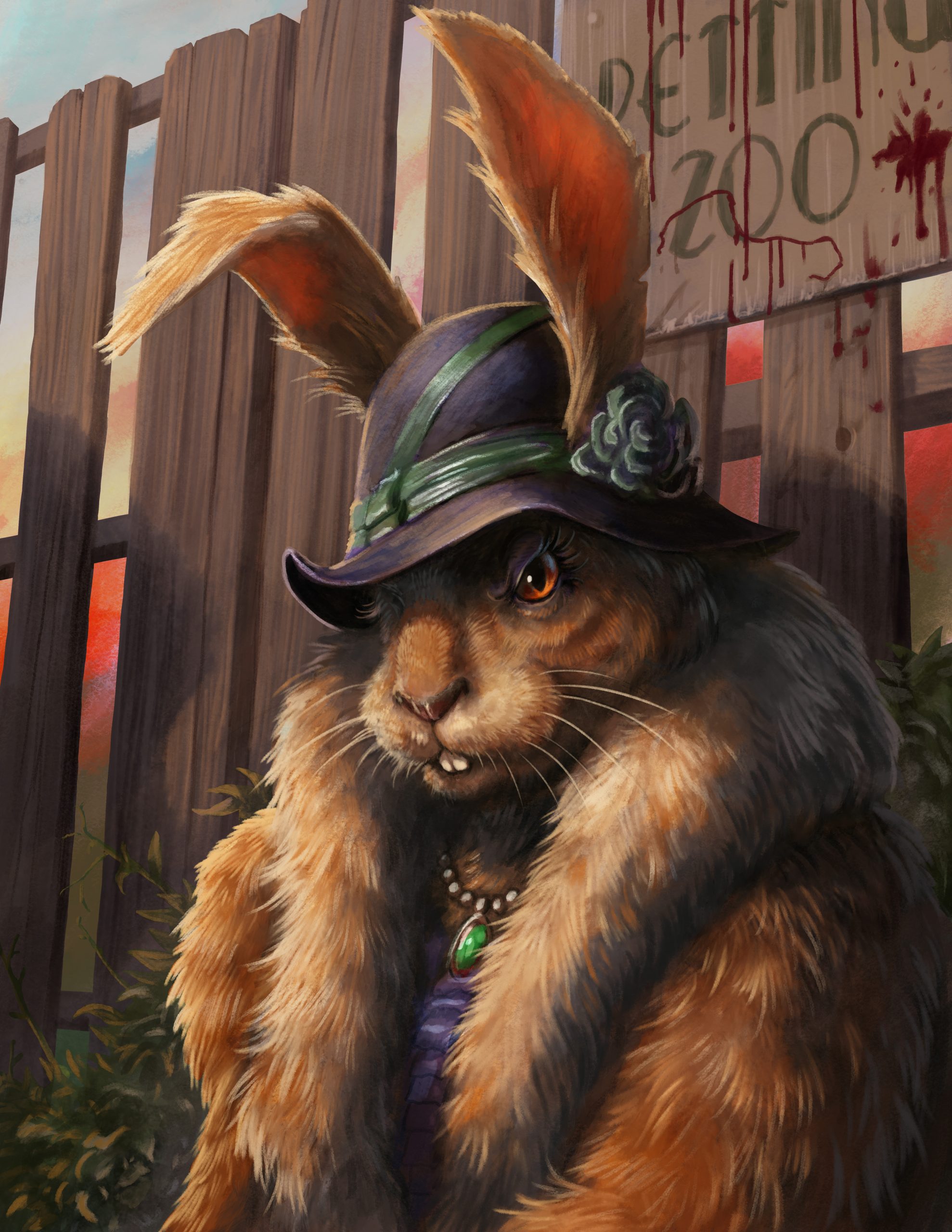
D&D Action: Pillars of the DM Craft, Part 1
This article is meant as a continuation of my introductory piece on the three Pillars of the RPG Craft: action, adventure, and association. In that article, I established what I meant by each of those components and how they related to each other. As a quick summary, action deals with conflict, adventure fills the gap between action, and association is interaction by the PCs with the world that cycles back around to create more action. All of these components form the backbone of narrative development in a tabletop RPG, in my humble opinion.
Building on the pillars of D&D
So where do we go from here? Let’s take a look at how these elements came to be in Dungeons & Dragons’ history. As many of you know, D&D is the most prolific tabletop RPG and its development has shaped the way other games have evolved. The aspects it has emphasized, or failed to, have in turn informed the focus of other tabletop RPGs that sprang up in its wake. If we look at D&D and the history of these elements in its many iterations, we can be better equipped to understand their significance in the hobby as a whole.

D&D action is just waiting to happen in scenarios like this one. [Art by Jeff Brown]
From first beginnings…
Action has been a central component to D&D since its inception. This we know. Gary Gygax and Dave Arneson created the original format for D&D as a fantasy supplement to a wargame called Chainmail back in 1974. Right from the start, they knew the game would have its core in combat and conflict.
Even in the first edition Advanced D&D Dungeon Master’s Guide, the sections for combat rules, weapon and armor types, spellcasting, and other action related subjects comprise a good 30 percent of the 244 pages of the book itself. In the second edition DMG it pushed upwards of 50 percent of the whole book! It was evident from the start that action would be central to the mechanisms of the game, which isn’t a bad thing by any means. It’s just a product of the roots of the game residing in a wargame. And those roots formed a strict underpinning that flavored the rest of the game’s rules and mechanics accordingly.
As another example, take a look at the information regarding experience gain:
“The judgment factor is inescapable with respect to weighting experience for the points gained from slaying monsters and/or gaining treasure. You must weigh the level of challenge – be it thinking or fighting – versus the level of experience of the player character(s) who gained it. With respect to monsters, each hit die balances 1 experience level, counting each special ability and each exceptional ability as an additional hit die, and also counting any hit point plus as an additional hit die. Dividing the total adjusted hit dice equivalent of the monsters slain by the total of all levels of experience of all characters who had a part (even if only 1 missile, blow, spell, etc.) in the slaying yields a fraction which is the measure of challenge.” – from the Advanced Dungeons & Dragons Dungeon Master’s Guide
This, coupled with the experience gained from “physically [taking treasure] out of the dungeon or lair and [turning] it into a transportable medium or [storing it] in the player’s stronghold to be counted for experience points” represented the only way to gain experience in first and second edition AD&D. Granted there were sidebar comments instructing the Dungeon Master to award experience on a subjective basis, for things good roleplaying, intelligent play, actions that fit the group’s style, etc. But the focuses above are indicative of a much larger design philosophy permeating the origins of the game: going to dungeons, killing the monsters that reside within, and absconding with their amassed treasure is the focus of the game. Hence, the reward structures in place encouraged combat and dungeon crawls, and little else.
In the section about running the campaign, Gygax writes that doing so “typically results in giving them [the players] a brief background, placing them in a settlement, and stating that they should prepare themselves to find and explore the dungeon/ruin they know is nearby.” Right from the start, the mindset he suggests we encourage our players to assume is an action-oriented one. Find the dungeon. Kill the monsters. Take their loot. Get experience points or die trying.
…To great heights…
 The dawn of the 21st century saw the inception of third edition D&D. Three years later, we got D&D 3.5, a revision that took feedback from the community and changed some rules about magic item creation, added more prestige classes, and reworked the game from the ground up to better suit the desires of DMs and players alike. There was streamlining of old systems. Gone were the days of THAC0 and “save or die” mechanics (for the most part).
The dawn of the 21st century saw the inception of third edition D&D. Three years later, we got D&D 3.5, a revision that took feedback from the community and changed some rules about magic item creation, added more prestige classes, and reworked the game from the ground up to better suit the desires of DMs and players alike. There was streamlining of old systems. Gone were the days of THAC0 and “save or die” mechanics (for the most part).
But what remained was a heavy emphasis on action. Combat was still crunchy, with a cavalcade of rules to accompany it. There was a persistent expectation that miniatures would be used on a grid for the vast majority of games. There were templates available for DMs to create monsters from scratch to enliven encounters with their own devilish imaginations. The introduction of many more feats and abilities enabled players to control the progression of their characters to be even better at killing or otherwise overcoming action-filled scenarios the DM threw at them.
And then came fourth edition D&D. Much maligned for its radical changes to what many people felt were the core aspects of D&D, fourth edition may be the version of the game that focused most heavily on action as a base feature. Every class received powers that could be activated on a per day, per encounter, or per round basis. Even the subdivision of those time restraints is a huge indicator that action was going to be the main attraction. Two of them are based on time intervals that appear mainly in combat. And if you had a daily power, chances are it was an immensely powerful ability, useful in combat to turn the tables against overwhelming odds.
Fourth edition made the tabletop experience feel very much like a video game with abilities and skills that were used in a digital-feeling sense. It felt like playing an MMO and hitting your keybinds in the right rotation, or playing a JRPG like Final Fantasy and casting firaga by selecting it from a dropdown menu. And to further this point, fourth edition is the point at which milestone experience became a fleshed out idea: awarding experience for completion of objectives, like a video game.
…And beyond
Fast forward to 2014 and we receive fifth edition. And here’s where the emphasis on action decides to give way and let the other pillars in. Combat gets five pages in the fifth edition DMG. By no means should this tell us that action is being surpassed by the other pillars. What it should tell us is that we should have a broader definition of action. Hence my choice of definition in the introductory article: anything that involves conflict. Take a look at this passage from the portion of the DMG about adventure creation:
“Creating an adventure involves blending scenes of exploration, social interaction, and combat into a unified whole that meets the needs of your players and your campaign.”
Most of this is standard thoroughfare across every edition of D&D. Exploration has always been a key component, as we’ll see in the next article about adventure. As has combat. But fifth edition assumes that interaction with the world is crucial, via social scenes, which implicitly have some kind of experience value associated with them. And what’s more they must all be combined into a unified whole. In other words, D&D isn’t D&D (in this iteration) unless all those elements come together into some kind of fluid narrative arc that’s satisfying for both the players and the DM.
The reward structures in fifth edition are still the same old, same old. Experience is mainly gained by killing things and taking their treasure. But there are new structures in fifth edition like Inspiration, which is a reward for player behavior, that tell players it’s okay to play in a style other than that of a power gamer.
With fifth edition, we see the perspective I’m taking on tabletop RPGs in general coming to light. We need all the pillars to tell a good story. Otherwise the structure we’re building isn’t going to be balanced and it won’t be aesthetically or narratively pleasing to experience.
Like this?
Did you enjoy this post? Nerdarchy’s awesome volunteer staff of writers and editors do their best to create engaging, useful and fun content to share. If you like what you find here on our site, consider patronizing us in a good way through Patreon.
On top of reaching our goal of paying our writers, pledging gets you exclusive monthly content for your D&D game, opportunities to game with Nerdarchy, access to patron-only channels on our Discord and more
With your generous support we’ll continue to create quality content between our YouTube channel and blog, invest in equipment to increase recording quality, and eventually create original publications and products to enhance your tabletop role-playing and gaming experience.
Thank you for your consideration and as always, until next time stay nerdy!
[amazon_link asins=’0786966246,0786965622,B0752L8GSZ’ template=’ProductCarousel’ store=’nerdarchy-20′ marketplace=’US’ link_id=’7770a736-3131-11e8-b9d9-79906025f67b’]












No Comments